Top News

The California Hospital Association files suit against the state public health department to block a requirement that hospitals report detailed information about surgical site infections starting June 1. CHA says most hospitals don’t have the information available electronically, so they would have to take time away from patient care to dig through records manually.
Reader Comments
 From Ricky Roma: “Re: Dr. Jayne’s IT comments. Doctor, we live in a world that has networks, and that network has to be guarded by men with decreased budget and staff. Who’s gonna do it? You? The executive staff? We IT guys have a greater responsibility than you could possibly fathom. You weep for your iPad, and you curse IT. You have that luxury. You have the luxury of not knowing what I know. Denying iPhones, while tragic, probably saves PHI. And my existence, while grotesque and incomprehensible to you, saves PHI. You don’t want the truth, because deep down, in places you don’t talk about in the doctors’ lounge, you want me on that network. You need me on that network. We use words like governance, security, encryption. We use these words as the backbone of a career spent defending something. You use them as a punch line. I have neither the time nor the inclination to explain myself to a physician who sees patients under the blanket of the very security that I provide, and then questions the manner in which I provide it. I would rather you just said thank you and went on your way, Otherwise, I suggest you log on to a PC like everyone else. Either way, I don’t give a damn what device you think you are entitled to.” Brilliant as always from one of my favorite (but seldom heard) contributors.
From Ricky Roma: “Re: Dr. Jayne’s IT comments. Doctor, we live in a world that has networks, and that network has to be guarded by men with decreased budget and staff. Who’s gonna do it? You? The executive staff? We IT guys have a greater responsibility than you could possibly fathom. You weep for your iPad, and you curse IT. You have that luxury. You have the luxury of not knowing what I know. Denying iPhones, while tragic, probably saves PHI. And my existence, while grotesque and incomprehensible to you, saves PHI. You don’t want the truth, because deep down, in places you don’t talk about in the doctors’ lounge, you want me on that network. You need me on that network. We use words like governance, security, encryption. We use these words as the backbone of a career spent defending something. You use them as a punch line. I have neither the time nor the inclination to explain myself to a physician who sees patients under the blanket of the very security that I provide, and then questions the manner in which I provide it. I would rather you just said thank you and went on your way, Otherwise, I suggest you log on to a PC like everyone else. Either way, I don’t give a damn what device you think you are entitled to.” Brilliant as always from one of my favorite (but seldom heard) contributors.
 From Mile High Club: “Re: WSJ article on use of corporate jets. It includes a searchable database, finding that destinations often coincided with the vacation homes of executives. McKesson had 41 flights to Martha’s Vineyard and Laconia, NH (probably someone’s house on Lake Winnipesaukee).”
From Mile High Club: “Re: WSJ article on use of corporate jets. It includes a searchable database, finding that destinations often coincided with the vacation homes of executives. McKesson had 41 flights to Martha’s Vineyard and Laconia, NH (probably someone’s house on Lake Winnipesaukee).”
HIStalk Announcements and Requests

 This week on HIStalk Practice: additional background on the RWJF report that found diabetics treated by practices with EHRs received significantly better care than those treated at paper-based offices. Turns out the paper-based offices also had almost five times more non-insured or Medicaid patients than the EHR-based practices and twice as many non-white patients. Also: Julie McGovern of Practice Wise shares tips for creating a disaster recovery plan. A new organization is launched to certify medical scribes. Less than one-third of physicians are expected to remain independent by 2013. Dr. Gregg shares HITECH support woes and wins. If you like the ambulatory world (and who doesn’t?) then you’ll want to make sure to sign up for the HIStalk Practice e-mail updates.
This week on HIStalk Practice: additional background on the RWJF report that found diabetics treated by practices with EHRs received significantly better care than those treated at paper-based offices. Turns out the paper-based offices also had almost five times more non-insured or Medicaid patients than the EHR-based practices and twice as many non-white patients. Also: Julie McGovern of Practice Wise shares tips for creating a disaster recovery plan. A new organization is launched to certify medical scribes. Less than one-third of physicians are expected to remain independent by 2013. Dr. Gregg shares HITECH support woes and wins. If you like the ambulatory world (and who doesn’t?) then you’ll want to make sure to sign up for the HIStalk Practice e-mail updates.
 In almost totally unrelated to HIT news: a couple of girlfriends and I stayed at a upscale hotel recently for a little getaway. All three of us came home with what I have diagnosed to be bed bug bites (you know, I did the Internet research thing and compared my bites to the online photos.) Which leads me to wonder: are bed bugs the latest work hazard for HIT road warriors? It’s a totally disgusting topic, I realize, but it’s an issue I never really worried about in my traveling days. FYI, I complained to the hotel; they checked the room and told me they found no evidence of bed bugs. BFFs and I are thus considering whether we’d be better off visiting a dermatologist or simply seeking a psych consult.
In almost totally unrelated to HIT news: a couple of girlfriends and I stayed at a upscale hotel recently for a little getaway. All three of us came home with what I have diagnosed to be bed bug bites (you know, I did the Internet research thing and compared my bites to the online photos.) Which leads me to wonder: are bed bugs the latest work hazard for HIT road warriors? It’s a totally disgusting topic, I realize, but it’s an issue I never really worried about in my traveling days. FYI, I complained to the hotel; they checked the room and told me they found no evidence of bed bugs. BFFs and I are thus considering whether we’d be better off visiting a dermatologist or simply seeking a psych consult.
 Listening: Black Joe Lewis & The Honeybears from Austin, TX, recommended by a reader. Here’s what I e-mailed to her: “I’m doing hideously uncoordinated chair-based dance moves to Booty City, thinking I’ve gone back in time to the 60s to listen to Edwin Starr doing 25 Miles from Home. Now I’m going to want to accentuate everything I say with an emotional ‘HUuaaH’ just like this guy (and James Brown) I’m making that ‘white man trying to be funky’ look by scrunching up my nose, sneering, and and squinting as I bob my head out of time with the music and do some walking bass on the air guitar.”
Listening: Black Joe Lewis & The Honeybears from Austin, TX, recommended by a reader. Here’s what I e-mailed to her: “I’m doing hideously uncoordinated chair-based dance moves to Booty City, thinking I’ve gone back in time to the 60s to listen to Edwin Starr doing 25 Miles from Home. Now I’m going to want to accentuate everything I say with an emotional ‘HUuaaH’ just like this guy (and James Brown) I’m making that ‘white man trying to be funky’ look by scrunching up my nose, sneering, and and squinting as I bob my head out of time with the music and do some walking bass on the air guitar.”
 On the Jobs Page: Solutions Executive – Virtual Office, Technical Marketing Engineer – Work from Home, Healthcare IT Technical Recruiter. On Healthcare IT Jobs: Allscripts Test Manager and Test Resource, Implementation Consultant, Meditech PCM Implementation Analyst.
On the Jobs Page: Solutions Executive – Virtual Office, Technical Marketing Engineer – Work from Home, Healthcare IT Technical Recruiter. On Healthcare IT Jobs: Allscripts Test Manager and Test Resource, Implementation Consultant, Meditech PCM Implementation Analyst.
 First, do no harm. Once that’s done, (a) sign up for e-mail updates in the box to your upper right (unless your display is set to low resolution, in which case it could be just about anywhere); (b) send me news, rumors, and anything that would tickle my sophomoric humor; (c) find Inga, Dr. Jayne, my sites, and me on your favorite social not-working tool and make the appropriate electronic connections so we can feign mass appeal; (d) accept my personal challenge to randomly inspect five of the admittedly large number of ads to your left and click them, waiting excitedly as in the presence of Monty Hall to see what’s behind Door Number 3 and knowing that you are thereby supporting us keyboard-clackers who work absurd hours after our day jobs; and (e) don’t worry, be happy.
First, do no harm. Once that’s done, (a) sign up for e-mail updates in the box to your upper right (unless your display is set to low resolution, in which case it could be just about anywhere); (b) send me news, rumors, and anything that would tickle my sophomoric humor; (c) find Inga, Dr. Jayne, my sites, and me on your favorite social not-working tool and make the appropriate electronic connections so we can feign mass appeal; (d) accept my personal challenge to randomly inspect five of the admittedly large number of ads to your left and click them, waiting excitedly as in the presence of Monty Hall to see what’s behind Door Number 3 and knowing that you are thereby supporting us keyboard-clackers who work absurd hours after our day jobs; and (e) don’t worry, be happy.

 Thanks to Bulletin Healthcare, new to both HIStalk and HIStalk Practice as a Platinum Sponsor. The publishing company sends out electronic newsletters to 400,000 doctors every morning by 8:00 a.m., working with two dozen leading medical associations to meet the unique news requirements of their members as a valued member benefit (American Medical Association’s AMA Morning Rounds, American College of Physician Executives’ ACPE Daily Digest, and American College of Cardiology’s CV News Digest, to name a few.) The Reston-based company is the medical division of Bulletin News, which provides executive news briefings for the President and most of the Cabinet. They’re happy to tell companies about their advertising programs, should yours have an interest. Thanks to Bulletin Healthcare for supporting HIStalk and HIStalk Practice.
Thanks to Bulletin Healthcare, new to both HIStalk and HIStalk Practice as a Platinum Sponsor. The publishing company sends out electronic newsletters to 400,000 doctors every morning by 8:00 a.m., working with two dozen leading medical associations to meet the unique news requirements of their members as a valued member benefit (American Medical Association’s AMA Morning Rounds, American College of Physician Executives’ ACPE Daily Digest, and American College of Cardiology’s CV News Digest, to name a few.) The Reston-based company is the medical division of Bulletin News, which provides executive news briefings for the President and most of the Cabinet. They’re happy to tell companies about their advertising programs, should yours have an interest. Thanks to Bulletin Healthcare for supporting HIStalk and HIStalk Practice.
Sales

The Regional Medical Center at Memphis (TN) purchases Carestream Health’s Vue RIS for radiology scheduling and reporting.
The University of Virginia Health System extends its licensing agreement for Streamline Health’s document workflow solutions and adds Streamline’s Correspondence Workflow application.
People

Press Ganey promotes Robert Draughon from president and CFO to CEO, replacing Richard B. Siegrist, Jr. Siegrist will transition to chief innovation officer and remain on the board. We reported this Monday, courtesy of a rumor report from South Bend Snoop.
PatientSafe Solutions names Joseph Condurso president and COO. He was a CareFusion VP and also spent time with Cardinal Health.
EnovateIT president Fred Calero wins Ernest & Young’s Entrepreneur of the Year award for Michigan and Northwest Ohio in the healthcare services category.

 Vivek Kundra, the nation’s first CIO, will quit in August to take a Harvard fellowship. Like his boss, opinions vary on whether he has accomplished anything of positive significance. Nobody has said much about a possible successor, so I don’t know if Aneesh Chopra has the cred or interest.
Vivek Kundra, the nation’s first CIO, will quit in August to take a Harvard fellowship. Like his boss, opinions vary on whether he has accomplished anything of positive significance. Nobody has said much about a possible successor, so I don’t know if Aneesh Chopra has the cred or interest.

Industry long-timer Rick O’Pry, founder of JR O’Pry Consulting and IntraNexus, launches a consulting company called HIT Strategists.
Announcements and Implementations

St. Michael’s Hospital (MN) will go live on Meditech on July 1.
 Mayo-Austin (MN) apologizes to patients for long registration delays caused by the EMR it installed in April, saying it “has temporarily slowed down our registration process and phone response time as we check the accuracy of patient information and become more proficient with the system.” They’ve hired more staff. I bet decreased patient satisfaction and increased headcount to do the same work wasn’t in their business plan.
Mayo-Austin (MN) apologizes to patients for long registration delays caused by the EMR it installed in April, saying it “has temporarily slowed down our registration process and phone response time as we check the accuracy of patient information and become more proficient with the system.” They’ve hired more staff. I bet decreased patient satisfaction and increased headcount to do the same work wasn’t in their business plan.

Omnicell’s OmniRX medication dispensing system wins Best in KLAS for hospitals 200 beds and over.
PDR Secure launches the RxEvent adverse event reporting service, which will allow doctors to report drug problems directly from their EHR. It was developed in conjunction with Greenway, the American Pharmacists Association, and athenahealth.
UPMC announces its HealthTrak mobile app for iPhones and iPads that allows patients to review their test results, history, meds, and appointments. It’s based on Epic’s MyChart.
Innovation and Research
 Fujitsu works with a hospital in Japan to roll out a patient guidance system based on e-paper. Patients carry an electronic card holder that guides them to diagnostic departments, checks them in, and accepts their payment. They can wander around while waiting since the system calls them when it’s their turn (not that hospitals have anywhere interesting to wander around in anyway, but at least they could distance themselves from Unemployment TV).
Fujitsu works with a hospital in Japan to roll out a patient guidance system based on e-paper. Patients carry an electronic card holder that guides them to diagnostic departments, checks them in, and accepts their payment. They can wander around while waiting since the system calls them when it’s their turn (not that hospitals have anywhere interesting to wander around in anyway, but at least they could distance themselves from Unemployment TV).
Technology

Ottawa Hospital is deploying mobile technology in a big way, purchasing 2,800 iPads for its 456-bed facility. The CIO notes that its iPad and iTouch users include doctors, nurses, pharmacists, respiratory therapists, and even janitors.
Online physician networking site QuantiaMD finds that over 30% of physicians use tablet devices, 20% of them in clinical settings.

Panasonic announces that it will bring out an enterprise-grade, Android-powered Toughbook tablet in the fourth quarter.
Other
Sparrow Health System (MI) hosts a job fair in an attempt to fill 70 to 80 IT job openings. Analysts will support the health system’s $100 million Epic EHR implementation. Starting salaries are $50-80K.
The Missouri Hospital Association estimates that 90% of the state’s hospitals use an EHR for at least one of 24 functions. On average, hospitals use about nine EHR functions, though 44% use at least 13.
CapSite believes the ambulatory EHR and PM market will exceed $3 billion through 2013, with 63% of physicians replacing their current PM systems for an integrated PM/EHR and 38% upgrading or replacing their current PM. Capsite’s 2011 U.S. Ambulatory EHR and PM Study also predicts that 50% of physician will be investing in ambulatory EHR systems. In terms of current market penetration, Allscripts and Epic each have 16%, followed by eClinicalWorks, NextGen, and GE.
A tornado in Verona, WI left Epic powerless for most of last Thursday, forcing it to run on backup generators.
 A California man is arrested for pretending to be a medical doctor. A patient got suspicious after he told her to treat her kidney disorder by eating watermelon in a hot tub.
A California man is arrested for pretending to be a medical doctor. A patient got suspicious after he told her to treat her kidney disorder by eating watermelon in a hot tub.
 Weird News Andy is speechless about this story: a woman in Sweden with fever, chills, and aches calls four times over four days for an ambulance, but is turned down because she is still able to speak. She dies. But WNA is tittering at this piece about English hospitals warning employees that their uniforms must not expose their midriffs or “excess cleavage” (whatever that means) after patients complained.
Weird News Andy is speechless about this story: a woman in Sweden with fever, chills, and aches calls four times over four days for an ambulance, but is turned down because she is still able to speak. She dies. But WNA is tittering at this piece about English hospitals warning employees that their uniforms must not expose their midriffs or “excess cleavage” (whatever that means) after patients complained.
Sponsor Updates

- SCI Solutions posts a video describing its new Arrival Manager product and a cool flipbook of its annual Innovations in Access Management magazine.
- MEDSEEK wins the 2011 Frost & Sullivan North American Health Records Technology Leadership award.
- FormFast and T-System collaborate to integrate the print management portion of FormFast’s workflow software with the T-Sheets documentation system.
- CareTech Solutions announces that two of its clients won 2011 Aster Awards for their Web sites.
- AsquaredM is offering a June 23 Webinar on improving revenue cycle performance with Lean Six Sigma.
- Hanger Orthopedic Group will deploy NextGen Ambulatory EHR and PM at its 675 orthotic and prosthetic patient care centers in 45 states.
- The Tennessee-headquartered RegionalCare Hospital Partners selects Healthcare Management Services (HMS) to provide clinical and financial applications .
- McKesson VP and medical director David Nace, MD is speaking about bundled payments at this week’s AHIP conference in San Francisco.
- A health center customer of TELUS Health Solutions wins an Ingenious Award for using the company’s remote patient monitoring solution to increase nurse productivity, reduce home visits, and save $450 per patient.
- Humana will offer financial assistance to physicians adopting Allscripts EHR as part of is as part Humana Medical Home EHR Rewards Program.
- Pinehurst Dermatology (NC) contracts for the SRS EHR.
- API Healthcare hires Kathy Douglas, RN, MHA as the company’s chief nursing officer. She founded the non-profit On Nursing Excellence.
- TeleTracking Technologies will preview its new RTLS solution at the 2011 Association for Advancement of Medical Instrumentation conference being held June 25-27 in San Antonio.
- HHS’s Office of Minority Health and Quest Diagnostics announce a program to donate 75 MedPlus EHR user licenses and one year’s subscription fees to physicians in small practices serving minority populations in Houston.
- Perceptive Software names Glenn Cross VP of Marketing.
- MED3OOO is offering an on-demand Webinar on Why ACOs Should Be Physician Led that features Amit Rastogi MD, president and CEO of PriMed LLC, a 70-provider medical group in Connecticut.
EPtalk by Dr. Jayne

Mile·stone (noun)
- A stone functioning as a milepost.
- A significant event or stage in the life, progress, development or the like of a person, nation, etc.
I believe in celebrating milestones. With the rapid pace that many of us run each day, it’s easy to overlook key events. We get used to doing the same tasks each day / week / month / year, falling into the cycle of “lather-rinse-repeat” and losing sight of the work that we are accomplishing.
I encourage my team to remember that, although this may be the 43rd time they’ve trained “E-prescribing 101,” this is the first time the users in their classes are seeing it. I remind them to remember the impact they are having on our end users and that completion of each class is an accomplishment.
We just took our 250th physician live on one of our clinical systems. The go-live wasn’t any different than any other go-live — the physician was aggravated that he had to be there and I was aggravated at having to deal with his surliness towards the IT team. However, calculating the number of times we’ve executed the same process multiplied by the number of people needed to work closely together to successfully get that physician live, it becomes significant. If you would have offered me a bet at the start of the rollout that we’d have this many physicians live on that application at this point, I wouldn’t have taken it.
We tend to take for granted the things that seem to be always present. Maybe we celebrate the beginnings and the ends — the new teammates and the retirements — but we forget to mark the events that happen along the way.
The five-year anniversary of an incredibly challenging project is passing without anyone in our organization other than those of us who were on the team at the beginning noticing. On one hand, maybe it’s good that the tool has become such a part of the organization that it’s not a big deal. But for those of us who still have flashbacks from the go-live (and probably a little post-traumatic stress disorder), it’s amazing.
Celebrating milestones helps us learn what others value and why it matters. Last Wednesday was HIStalk’s eighth birthday. Although Mr. H mentioned it, he tends to be the somewhat shy and retiring type, so it was pretty low key. I’d like to do my part to celebrate HIStalk and reflect on the impact Mr. H and company have had on me.
As a reader, HIStalk provides a reliable, humorous, and entertaining source of information that I could not possibly have uncovered without hours of sifting through the announcements, updates, and studies that come through my inbox and across my desk each week. It gives me tidbits of industry gossip that sometimes hit too close to home.
I’ve learned things about competing health systems that I could not have sleuthed out on my own. I’ve surprised vendor execs by asking them to confirm rumors about their companies that they haven’t even heard themselves. I’ve experienced HIStalkapalooza and the IngaTini.
As a member of the HIStalk team, I’ve had the opportunity to see different sides of vendors as Inga and I cruised the aisles at HIMSS, at one point switching badges to see if it made a difference in how we were received. One of the high points was meeting Mr. H for the first time in the HIStalk limo, changing into our doctor disguises and walking down International Drive with Inga in her amazing boots. We saw our sponsors, many of whom compete directly with each other, breaking bread together at the HIStalk luncheon.
I’ve learned that whether people like a particular piece I’ve written or whether they hate it, I don’t take it too personally either way.
This has been an opportunity to meet amazing people, make new friends, and learn that being anonymous can be a challenge. Using Dr. Jayne’s e-mail address, I’ve emailed people I’ve known for years — and have been ignored. I’ve socialized with key players in government and healthcare and have had to bite my lip to keep from saying, “OMG, if you knew you were talking to Dr. Jayne you would not have just said that.”
I’ve also built necessary career skills – namely the ability to keep coffee from coming out my nose when my co-workers quote HIStalk pieces that I’ve had a hand in.
Best of all, I’ve learned that what may seem like an insignificant event at the time can be a life-changing one. I’d like to thank a certain vendor exec for casually asking, “Do you read HIStalk?” over drinks on a certain day in 2009. At the time, I didn’t. But thanks to that simple question, along with the faith and support of Mr. H and Inga, as well as the camaraderie of Dr. Gregg and Dr. Travis (MD recently conferred!) I’m about to click SEND on Dr. Jayne’s 50th post. Here’s to milestones.

Contacts
Mr. H, Inga, Dr. Jayne, Dr. Gregg.






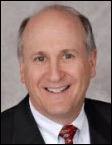




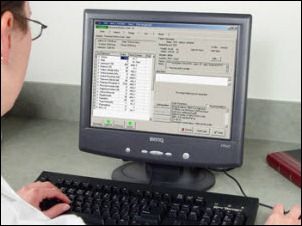






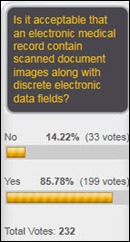


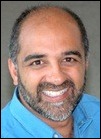








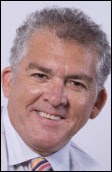

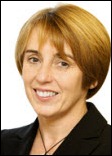
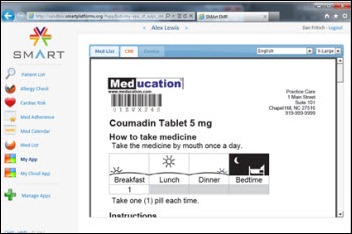











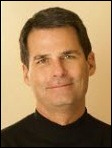
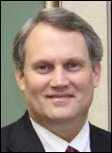


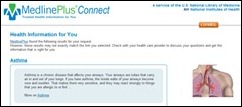


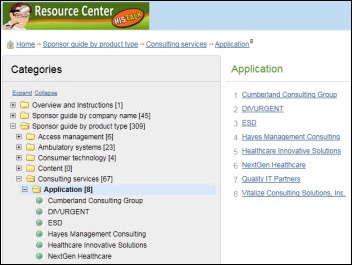


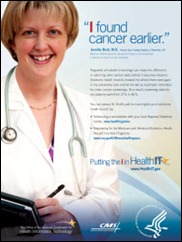
























Anything related to defense will need to go to Genesis.